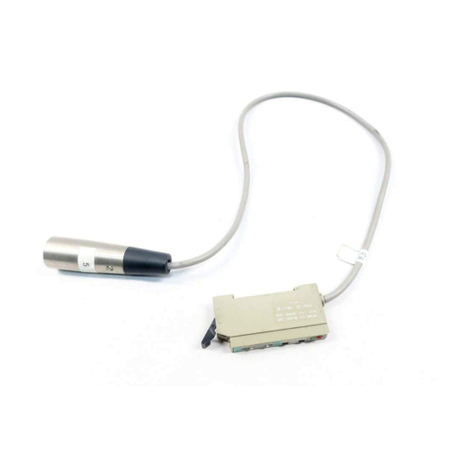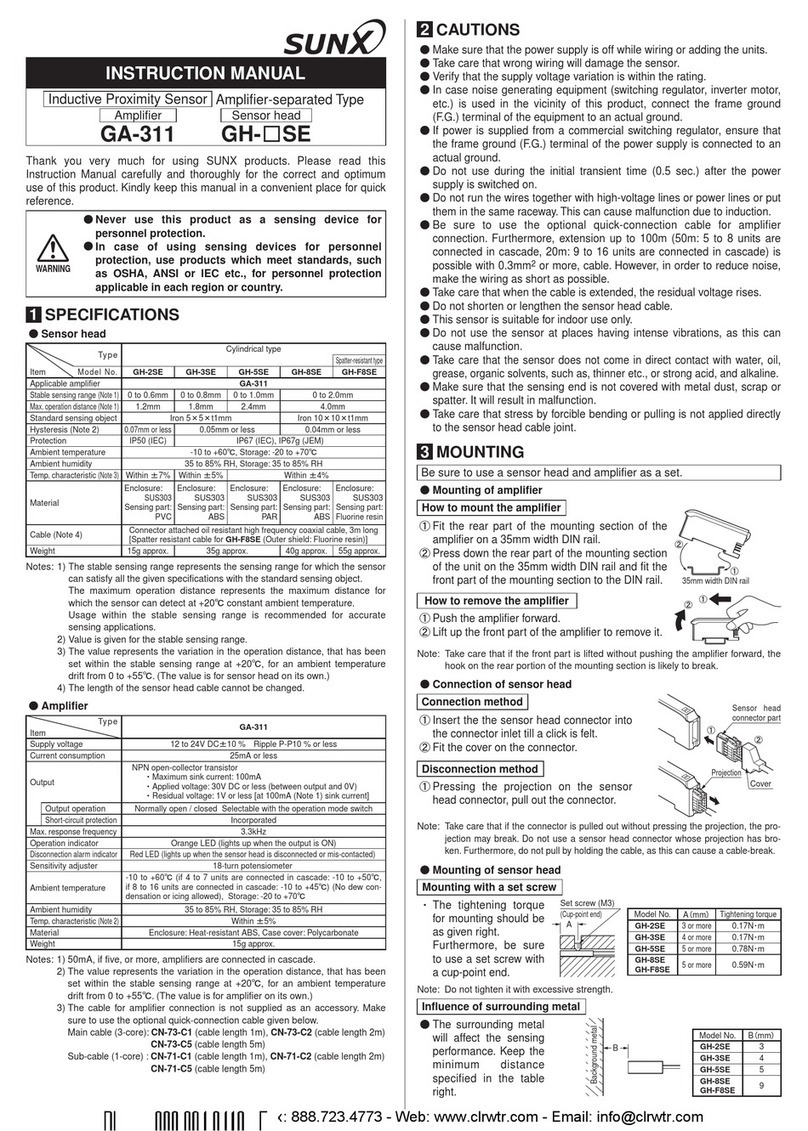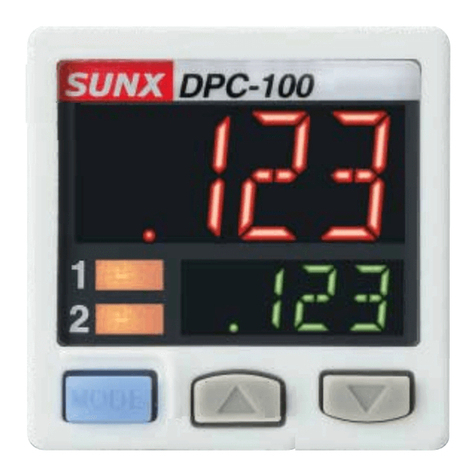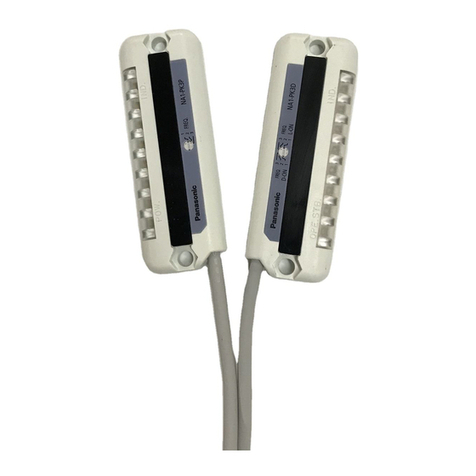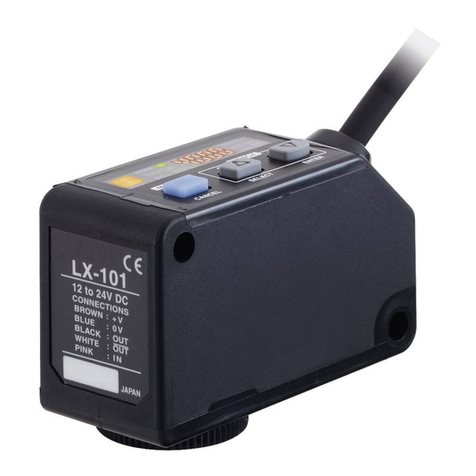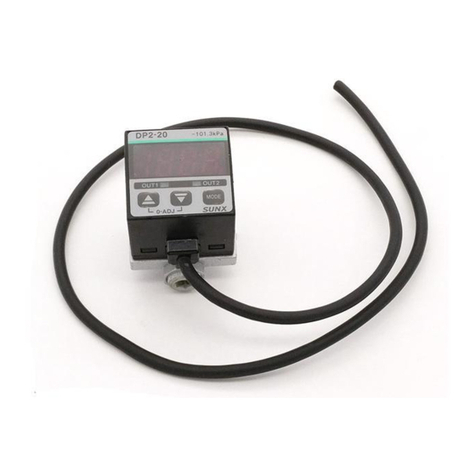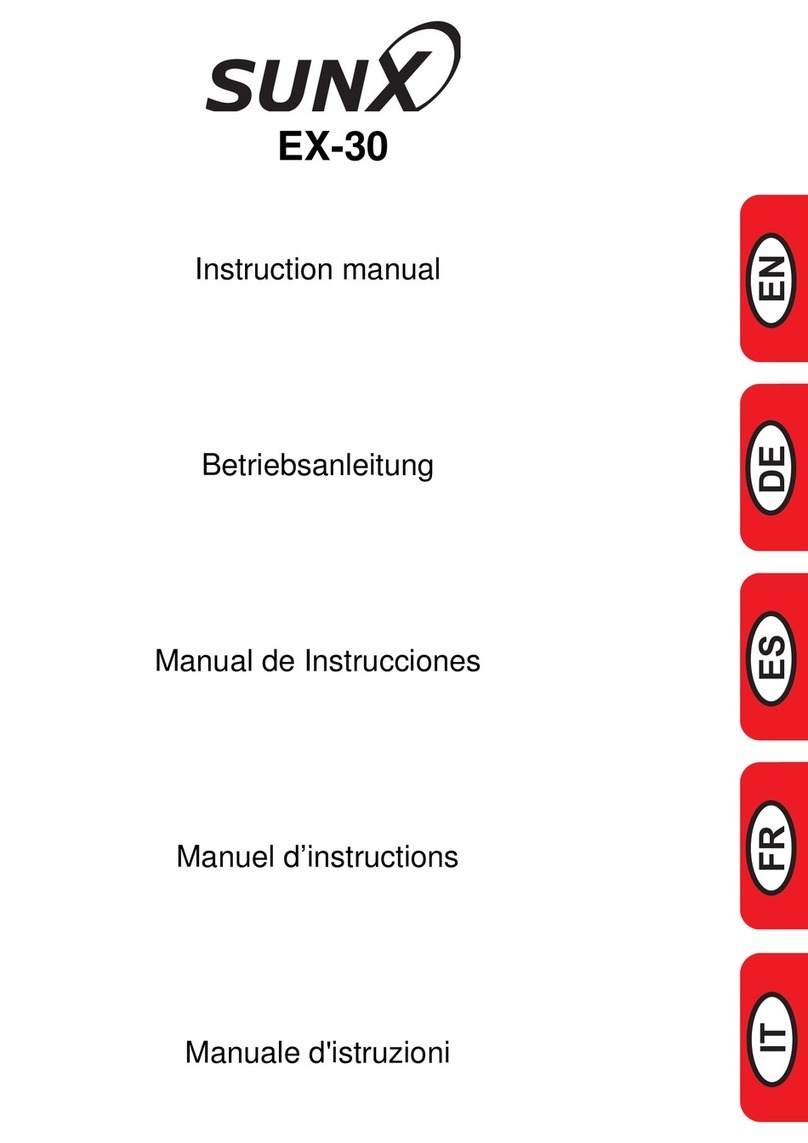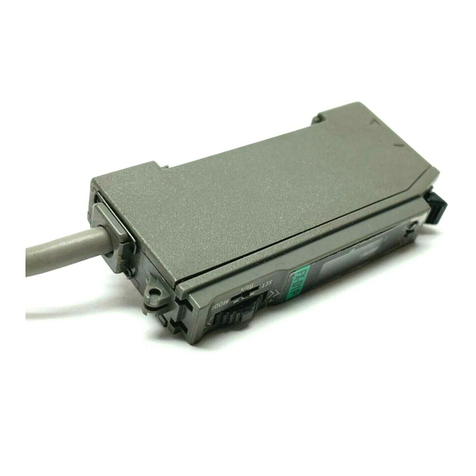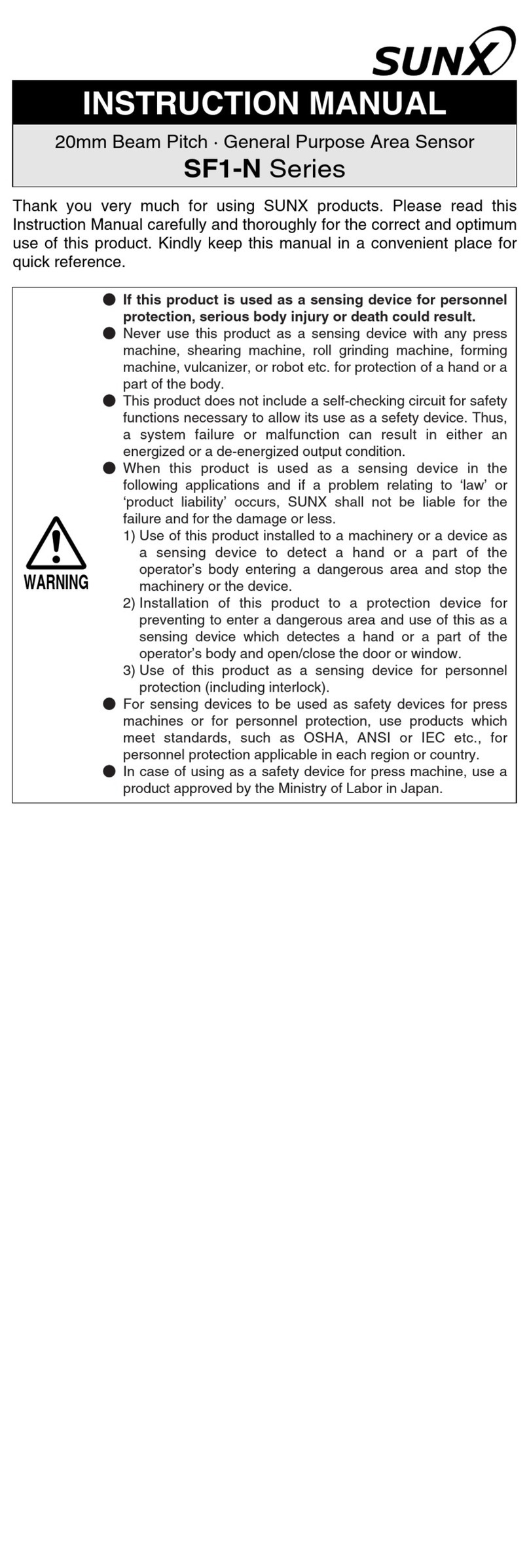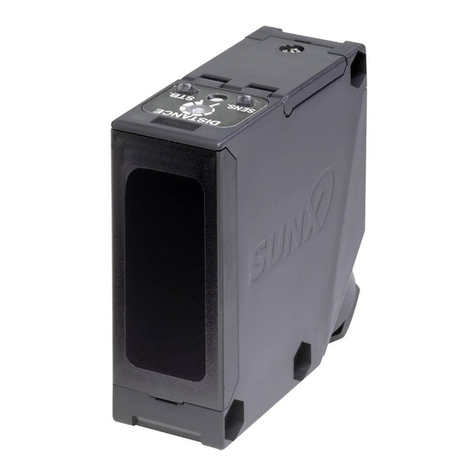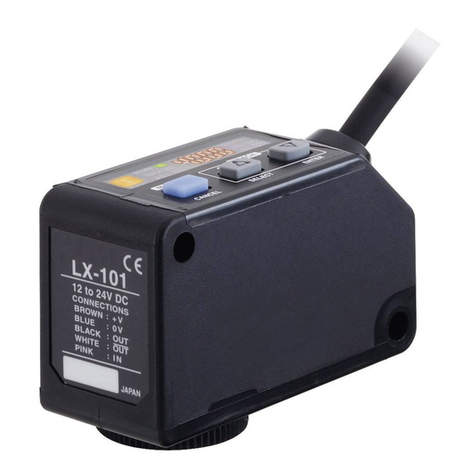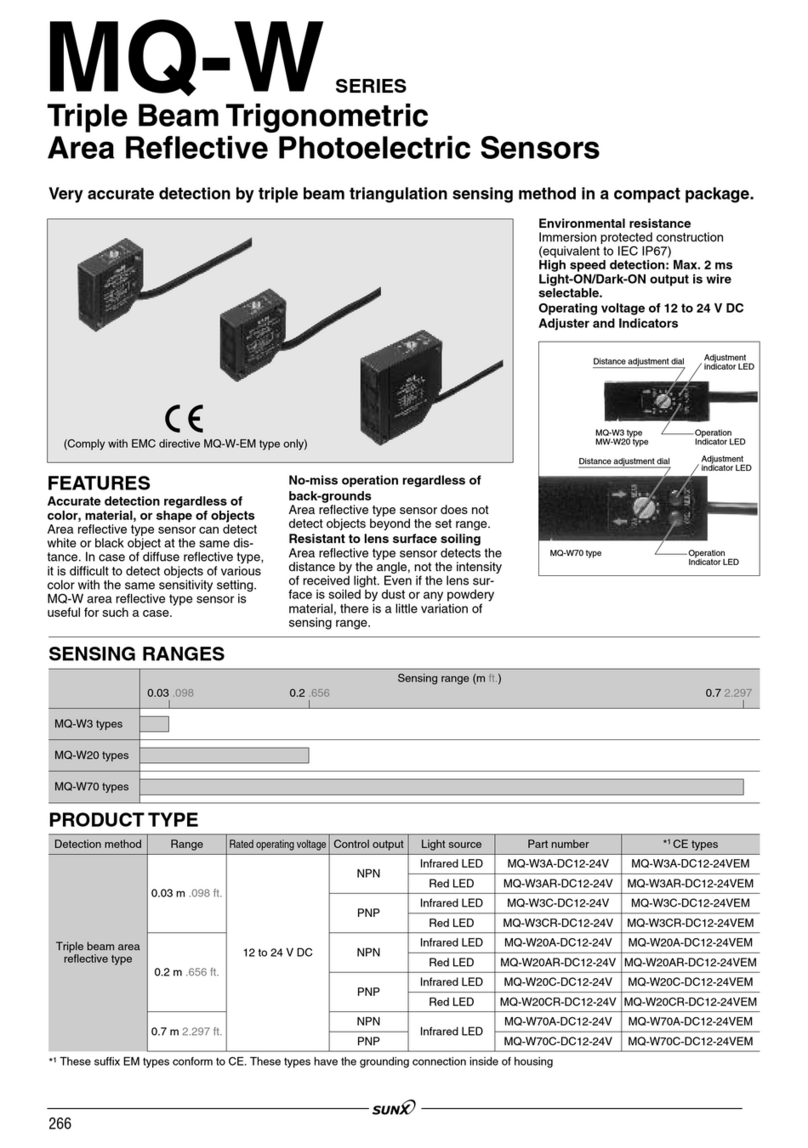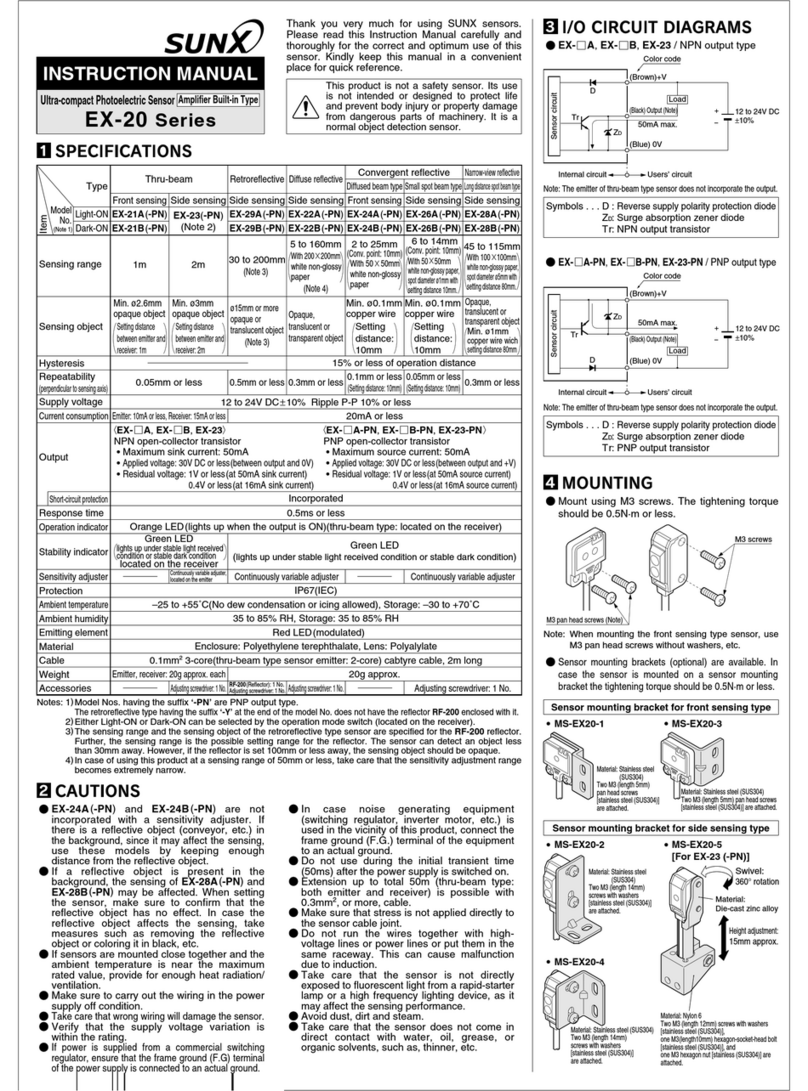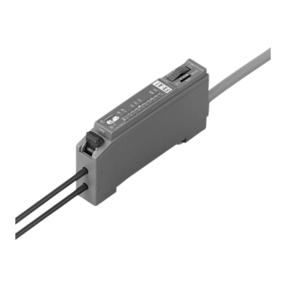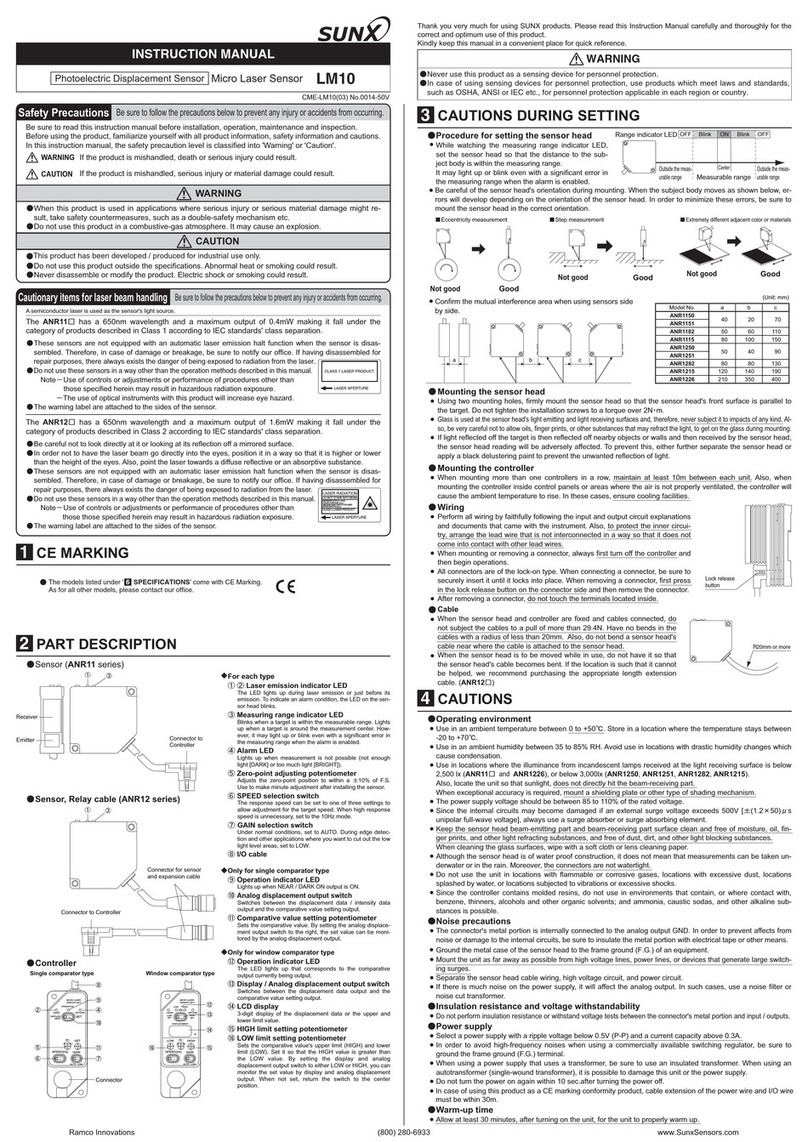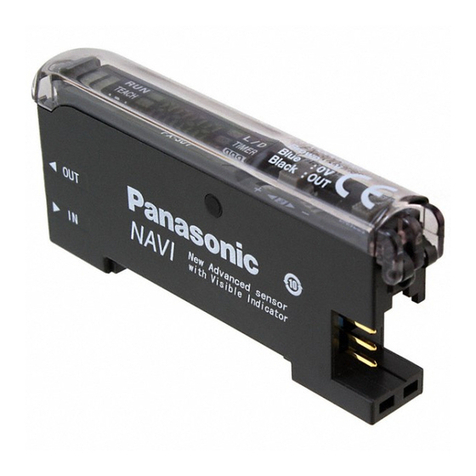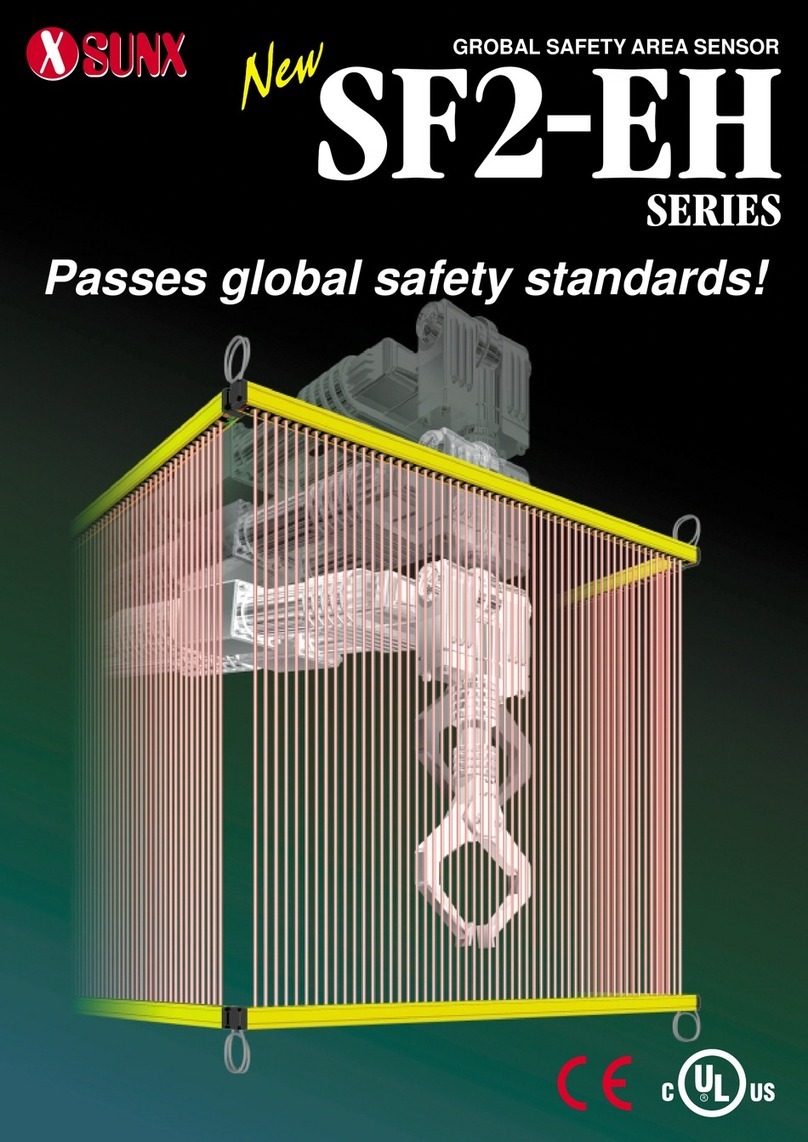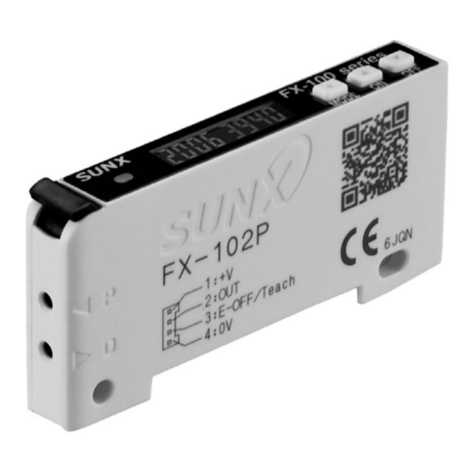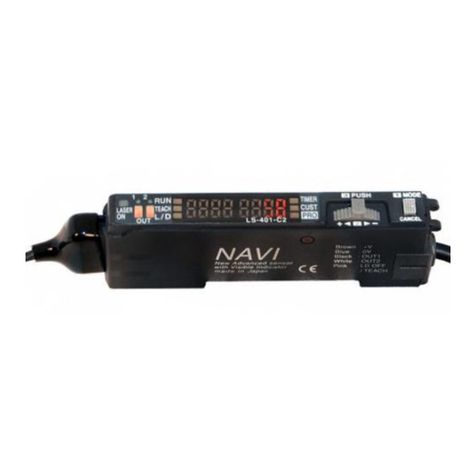
NA2-N Series
Slim Body Area Sensor
This product is not a safety sensor. Its use is not intended or
designed to protect life and prevent body injury or property
damage from dangerous parts of machinery. It is a normal
object detection sensor.
This sensor is not for press machine safeguard. Do not use this
sensor for any press machine. For area sensors conforming to
safety standards, please contact our office.
Thank you very much for using SUNX sensors. Please read this Instruction
Manual carefully and thoroughly for the correct and optimum use of this
sensor. Kindly keep this manual in a convenient place for quick reference.
INSTRUCTION MANUAL
Number of
beam channels
Item
Model No.
PNP output
NPN output
8
NA2-N8-PN
NA2-N8
12
NA2-N12-PN
NA2-N12
16
NA2-N16-PN
NA2-N16
20
NA2-N20-PN
NA2-N20
24
NA2-N24-PN
NA2-N24
28
140mm
Power consumption
Indicators
Emitter
Receiver
220mm 300mm 380mm
5m
20mm
30mm or more opaque object
NPN open-collector transistor
Maximum sink current: 100mA
Applied voltage: 30V DC or less
(between output and 0V)
Residual voltage: 1V or less
(at 100mA sink current)
0.4V or less
(at 16mA sink current)
PNP open-collector transistor
Maximum source current: 100mA
Applied voltage: 30V DC or less
(between output and +V)
Residual voltage: 1V or less
(at 100mA source current)
0.4V or less
(at 16mA source current)
12 to 24V DC 10% Ripple P-P 10% or less
460mm 540mm
0.5W or less 0.5W or less 0.6W or less 0.6W or less 0.7W or less 0.7W or less
0.4W or less 0.4W or less 0.5W or less 0.5W or less 0.6W or less 0.6W or less
0.7W or less 0.8W or less 0.9W or less 1.0W or less 1.1W or less 1.2W or less
0.6W or less 0.7W or less 0.8W or less 0.9W or less
ON when all beams are received (OFF when one or more beams are interrupted)
Incorporated
10 to 55 (No dew condensation or icing allowed), Storage: 10 to 60
10ms or less (12ms or less when the interference prevention function is used)
1.0W or less 1.1W or less
350g approx. 400g approx. 450g approx. 500g approx. 550g approx. 600g approx.
NA2-N28-PN
NA2-N28
Sensing height
Sensing range
Beam pitch
Sensing object
Supply voltage
Output
Response time
Ambient temperature
35 to 85% RH, Storage: 35 to 85% RH
Ambient humidity
Infrared LED (modulated)
Emitting element
Enclosure: Heat-resistant ABS, Front cover: Polyacetal, Indicator cover: Acrylic
Material
0.2mm24-core oil-resistant cabtyre cable, 3m long
Cable
Weight
Output operation
Emitter
Receiver
Short-circuit protection
Job indicator ON
Job indicator OFF
Job indicator ON
Job indicator OFF
Emitting indicator: Green LED 2 (light up when the power is ON;
one LED lights up for Frequency A setting,
both LEDs light up for Frequency B setting)
Job indicator: Red LED (lights up, blinks or lights off when the job indicator
input is applied, selected by operation mode switch)
NPN output type PNP output type
Operation indicator:
Stable incident beam indicator:
Job indicator:
Red LED (lights up when one or more beams are interrupted)
Green LED (lights up when all beams
are stably received)
Red LED (lights up, blinks or lights off when the job indicator
input is applied, selected by operation mode switch)
When an excess current flows through the output, the stable
incident beam indicator and the operation indicator on the
receiver blink simultaneously due to the operation of the short-
circuit protection circuit.
Use M4 screws with washers and M4 nuts. The
tightening torque should be 0.5N.m or less.
During mounting, do not apply any bending or
twisting force to the sensor. (Please arrange the
screws and nuts separately.)
Sensor mounting brackets (MS-NA2-1, MS-NA1-1)
are also available.
M4 screws with washers
M4 nuts
MS-NA2-1 assembly drawing MS-NA1-1 assembly drawing
In case of rear-side mounting
M4 screw
with washers
Anti-rotation hook
Sensor mounting bracket
nut
M4 screw
with washers
Anti-rotation hook
Sensor mounting bracket
nut
Make sure to carry out the wiring in the power supply off condition.
Verify that the supply voltage variation is within the rating.
If power is supplied from a commercial switching regulator, ensure that
the frame ground (F.G.) terminal of the power supply is connected to an
actual ground.
In case noise generating equipment (switching regulator, inverter motor,
etc.) is used in the vicinity of this product, connect the frame ground
(F.G.) terminal of the equipment to an actual ground.
Do not use during the initial transient time (500ms approx.) after the
power supply is switched on.
Extension up to total 25m is possible, for both emitter and receiver, with
0.2mm2, or more, cable. However, in order to reduce noise, make the
wiring as short as possible.
Do not run the wires together with high-voltage lines or power lines or put
them in the same raceway. This can cause malfunction due to induction.
Take care that the sensor is not directly exposed to fluorescent light from
a rapid-starter lamp or a high frequency lighting device, as it may affect
the sensing performance.
Avoid dust, dirt, and steam.
Take care that the sensor does not come in direct contact with water, oil,
grease, or organic solvents, such as, thinner, etc.
Do not use in an environment containing inflammable or explosive gas.
Make sure to use an isolation transformer for the DC power supply. If an
auto-transformer (single winding transformer) is used, this product or the
power supply may get damaged.
In case a surge is generated in the used power supply, connect a surge
absorber to the supply and absorb the surge.
The emitter and the receiver must face each other with their cable ends on
the same side. If they are set upside down, the sensor will not work correctly.
Receiver
Non-voltage contact or
NPN open-collector transistor
Low
High
: 0 to 2V
: 5 to 30V, or open
or
Internal circuitUsers,circuitInternal circuit Users,circuit
Color code
(Brown) +V
(Blue) 0V
(Orange/Violet)
Synchronization wire
(Orange/Violet)
Synchronization wire
D D
Tr
ZD
EE
(Pink) Input
(Note 1)
(Brown) +V
Load
(Blue) 0V
Job
indicator
Job
indicator
(Black)
Output
(Brown) +V
(Blue) 0V
(Orange/Violet)
Synchronization wire
(Orange/Violet)
Synchronization wire
(Pink) Input
(Note 1)
(Brown) +V
(Blue) 0V
(Black)
Output
Color code
Color code Color code
Emitter
ReceiverEmitter
100mA max.
Notes: 1)
2)
3)
Symbols... :
Reverse supply polarity protection diode
: Surge absorption zener diode
: NPN output transistor
: Job indicator
Input (pink) is the job indicator input when No. 4 of the operation mode switch on the
emitter is set to the OFF side, and it is the test input when the switch is set to the ON side.
In order to use the job indicator as a large operation indicator, connect the input
(pink) of the emitter to the output (black) of the receiver.
When the test input is set, the job indicator does
not light up or blink.
Non-voltage contact or
PNP open-collector transistor
Low
High
: 0 to 2V, or open
: 8V to +V
or
Internal circuitUsers,circuitInternal circuit Users,circuit
D D
Tr
ZD
EE
Load
100mA max.
Sensor circuit
Sensor circuit
Job
indicator
Job
indicator
Sensor circuit
Sensor circuit
D
ZD
Tr
E
Notes: 1)
2)
3)
Symbols... :
Reverse supply polarity protection diode
: Surge absorption zener diode
: PNP output transistor
: Job indicator
Input (pink) is the job indicator input when No. 4 of the operation mode switch on the
emitter is set to the OFF side, and it is the test input when the switch is set to the ON side.
In order to use the job indicator as a large operation indicator, connect the input
(pink) of the emitter to the output (black) of the receiver.
When the test input is set, the job indicator does
not light up or blink.
D
ZD
Tr
E
